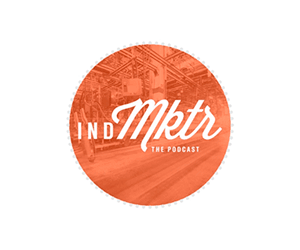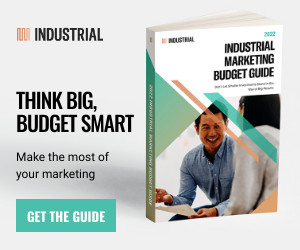As with all good marketing, an effective email marketing strategy boils down to knowing your audience.
With industrial marketing, you’re often talking to engineers, who play a vital role in any purchasing decision pertaining to technical products or services. To better understand this critical audience — and how to create an effective email marketing strategy for it — Industrial Marketer connected with Amber Cooleen, Senior Director, Audience Development at IEEE GlobalSpec, an industrial-focused media company that produces and distributes content consumed by more than half the engineers in the world.
Here is an edited version of the conversation.
Industrial Marketer: What types of e-newsletters do engineers subscribe to (e.g., company newsletters, newsletters issued by publications)?
Amber Cooleen: Research from our Pulse of Engineering Survey shows that nearly half of engineers and technical professionals subscribe to three or more free e-newsletters. This includes publisher newsletters plus individual company e-newsletters.
When it comes to how newsletters behave in an engineer’s inbox, we have found that half of engineers report that they scan for subject lines that interest them and delete the rest, while nearly a quarter read every newsletter for important information.
How effective are third-party e-newsletter media products and how can companies best leverage them as part of their email marketing strategy (e.g., as part of an integrated play or to convert subscribers into known contacts/leads in their own email database)?
Third-party e-newsletters play an important role in the B2B marketer’s content mix, as it exposes a company’s message to an engaged, motivated audience that expands beyond their house list.
We find that newsletter ads are excellent at reaching readers early in their buying process, allowing marketers to keep their company and capabilities top-of-mind as an engineer works through the design and/or purchasing process.
Advertisements that position a company as a thought leader and promote white papers, technical articles, and other relevant content are typically very well received by readers. Working with a publisher that can identify who engages with your advertisement and building your own landing pages to capture contact information can help you engage them during the buying process.
What sorts of trends are you noticing with e-newsletters for engineers?
We have found that including videos in our newsletter publications has been very effective in engaging an engineering audience. Showing an engineer how something works, instead of just telling them, is very compelling.
How often do you recommend emailing an engineering audience?
There is no secret sauce when it comes to email frequency. You want to strike a balance between emailing too frequently, which can overwhelm a subscriber and make them more likely to hit “delete” or “unsubscribe,” and not emailing frequently enough, which can result in a contact forgetting about who you are and why they subscribed to your program.
First, you may want to consider asking your subscribers how often they wish to hear from you. This can help you craft an effective email strategy that is respectful of your audience and their wishes. Another good rule of thumb is to base an email schedule around when you have something to tell them – don’t just send email for email’s sake.
What are some good ways to segment an email database of engineers?
There are a number of ways to segment your engineering email database. Job function, title, industry, and company are good places to start. If you have data on products they’ve purchased in the past, their role in purchasing decision, and their customer status (former/new/potential customer), that information can also be used to segment audience lists.
However you choose to segment your lists, you will want to make sure that your message is relevant and targeted to the audience segments you focus on.
How do you create content — specifically emails — that address those segmented audience needs?
Take advantage of your own company knowledge and insight to draft content that will resonate with your audiences.
Do you have specific products or solutions that appeal to a defined audience segment? Highlight those in your email communications. Another idea is to develop thought leadership content, such as white papers, articles, or videos, that address a specific audience segment — a problem you can solve, or some product insight that is highly relevant to their industry or job function. Define your most important segments and create tailored content for them.
Finally, you can always ask your audience what they would like to receive from you. Conduct user surveys or focus groups, or even ask your sales and customer service teams to provide you with insight into the questions and requests they receive.
Let’s talk about best practices for an effective email marketing strategy in general. What sort of practical advice do you have when it comes to helping marketers focus their email marketing program on their target audience?
Your audience should be at the center of your email marketing activities. Without audience engagement, you’re just spinning your wheels. The concept of focusing on your audience is two-fold.
First, you want to ensure that your email marketing efforts are delivering the right message to the right audience at the right time. Your customers are not likely comprised of a single, homogenous demographic; therefore, your email campaigns shouldn’t rely on a “one size fits all” approach. It doesn’t have to be sophisticated — even segmenting based on client status (past/current/future), geography, industry, or job function can make a difference.
Second, you need to make sure that your audience sees the value in your email communications. “What’s in it for them?” should be the first question you ask yourself when crafting your message and offer. Engineers and technical professionals are being buried in email, so you need to make your communication stand out. Do this by considering the mindset of your recipient and ensuring that every email you send is addressing them appropriately and delivering what they will value most from you.
Why do you recommend letting go of inactive users vs. trying to re-engage them with a focused campaign, for instance?
There comes a point in any email program where it becomes necessary to purge inactive recipients. This can be a source of pain for many marketers, especially when you’ve worked hard to gain subscribers and build your mailing list. But while your management team may be impressed with a large subscriber base, the more important measure of list health is engagement level.
Auditing your email lists on a regular basis and removing those who have been inactive for a period of time makes sense for your business. Taking things like length of your sales cycle and engagement with past campaigns into account will bring focus to your email programs.
A re-engagement campaign is a great practice to implement as part of your list cleansing efforts. Before removing inactive users from your list, you should absolutely conduct one final outreach to give them the chance to re-engage with you and continue the relationship.
What sort of data drives an effective email marketing strategy?
As email delivery programs become increasingly sophisticated, we have access to more campaign and program data than ever before.
When developing an email marketing strategy, you need to compile and consider every measure of past performance to ensure that your activities will deliver maximum results. Look at your program as a whole and at its individual components; examine every data point, including message, from and subject lines, images, templates, and delivery schedule. This can help you learn from past efforts and develop an email marketing strategy that aligns with your goals and objectives.
What KPIs do you recommend monitoring?
The KPIs of your email program should align with higher-level marketing objectives and overall business goals. It will vary from company to company.
Marketers really need to ask themselves what qualifies as success for them. Is it demand generation? Branding? Nurturing existing customers? Something else? Once you’ve defined your goals, you want to assign measurable metrics that will allow you to track success.
Developing Your Own Effective Email Marketing Strategy
If you haven’t already, the first step in creating an effective email marketing strategy is to define your audience. This can be accomplished by analyzing who they are in terms of demographics, psychographics, and professional needs. Also make sure to study your data, which represents your existing audience’s responses to your attempts to engage them to date.
For additional tips on how to implement an email program — or inspiration regarding ways you can engage your audience, check out these other email marketing articles from Industrial Marketer.
And remember: Email marketing is iterative. Don’t be afraid to try things, measure them, and revise your approach according to what you observe and how your audience and goals change. Email marketing is essentially a relationship — it’s something you have to work on with your audience over time.




